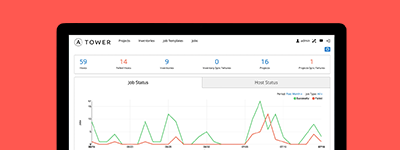yum - Manages packages with the yum package manager
Synopsis
Installs, upgrade, removes, and lists packages and groups with the yum package manager.
Requirements (on host that executes module)
- yum
Options
| parameter | required | default | choices | comments |
|---|---|---|---|---|
| conf_file |
no | The remote yum configuration file to use for the transaction. | ||
| disable_gpg_check |
no | no |
|
Whether to disable the GPG checking of signatures of packages being installed. Has an effect only if state is present or latest. |
| disablerepo |
no | Repoid of repositories to disable for the install/update operation. These repos will not persist beyond the transaction. When specifying multiple repos, separate them with a ",". | ||
| enablerepo |
no | Repoid of repositories to enable for the install/update operation. These repos will not persist beyond the transaction. When specifying multiple repos, separate them with a ",". | ||
| exclude (added in 2.0) |
no | Package name(s) to exclude when state=present, or latest | ||
| list |
no | Various (non-idempotent) commands for usage with /usr/bin/ansible and not playbooks. See examples. | ||
| name |
yes | Package name, or package specifier with version, like name-1.0. When using state=latest, this can be '*' which means run: yum -y update. You can also pass a url or a local path to a rpm file (using state=present). To operate on several packages this can accept a comma separated list of packages or (as of 2.0) a list of packages.aliases: pkg | ||
| state |
no | present |
|
Whether to install ( present or installed, latest), or remove (absent or removed) a package. |
| update_cache (added in 1.9) |
no | no |
|
Force updating the cache. Has an effect only if state is present or latest. |
| validate_certs (added in 2.1) |
no | yes |
|
This only applies if using a https url as the source of the rpm. e.g. for localinstall. If set to no, the SSL certificates will not be validated.This should only set to no used on personally controlled sites using self-signed certificates as it avoids verifying the source site.Prior to 2.1 the code worked as if this was set to yes. |
Examples
- name: install the latest version of Apache yum: name=httpd state=latest - name: remove the Apache package yum: name=httpd state=absent - name: install the latest version of Apache from the testing repo yum: name=httpd enablerepo=testing state=present - name: install one specific version of Apache yum: name=httpd-2.2.29-1.4.amzn1 state=present - name: upgrade all packages yum: name=* state=latest - name: install the nginx rpm from a remote repo yum: name=http://nginx.org/packages/centos/6/noarch/RPMS/nginx-release-centos-6-0.el6.ngx.noarch.rpm state=present - name: install nginx rpm from a local file yum: name=/usr/local/src/nginx-release-centos-6-0.el6.ngx.noarch.rpm state=present - name: install the 'Development tools' package group yum: name="@Development tools" state=present - name: install the 'Gnome desktop' environment group yum: name="@^gnome-desktop-environment" state=present
Notes
Note
When used with a loop of package names in a playbook, ansible optimizes the call to the yum module. Instead of calling the module with a single package each time through the loop, ansible calls the module once with all of the package names from the loop.
Note
In versions prior to 1.9.2 this module installed and removed each package given to the yum module separately. This caused problems when packages specified by filename or url had to be installed or removed together. In 1.9.2 this was fixed so that packages are installed in one yum transaction. However, if one of the packages adds a new yum repository that the other packages come from (such as epel-release) then that package needs to be installed in a separate task. This mimics yum’s command line behaviour.
Note
Yum itself has two types of groups. “Package groups” are specified in the rpm itself while “environment groups” are specified in a separate file (usually by the distribution). Unfortunately, this division becomes apparent to ansible users because ansible needs to operate on the group of packages in a single transaction and yum requires groups to be specified in different ways when used in that way. Package groups are specified as “@development-tools” and environment groups are “@^gnome-desktop-environment”. Use the “yum group list” command to see which category of group the group you want to install falls into.
This is a Core Module
For more information on what this means please read Core Modules
For help in developing on modules, should you be so inclined, please read Community Information & Contributing, Helping Testing PRs and Developing Modules.


